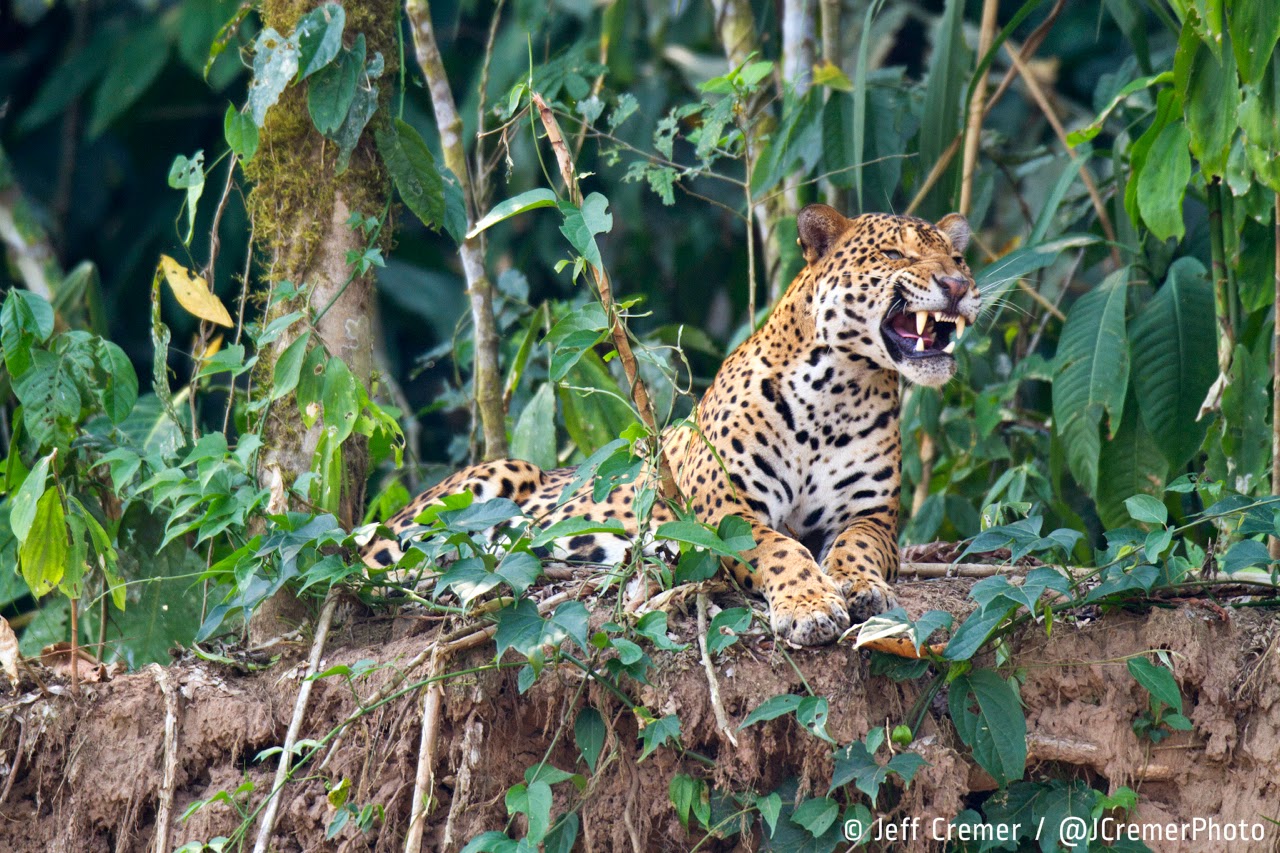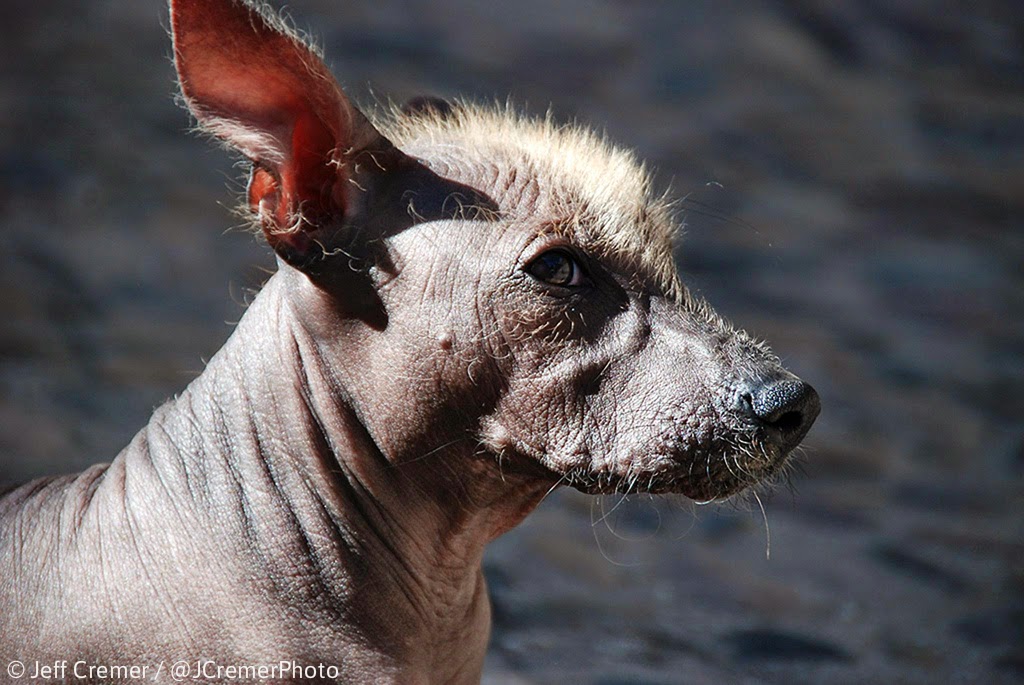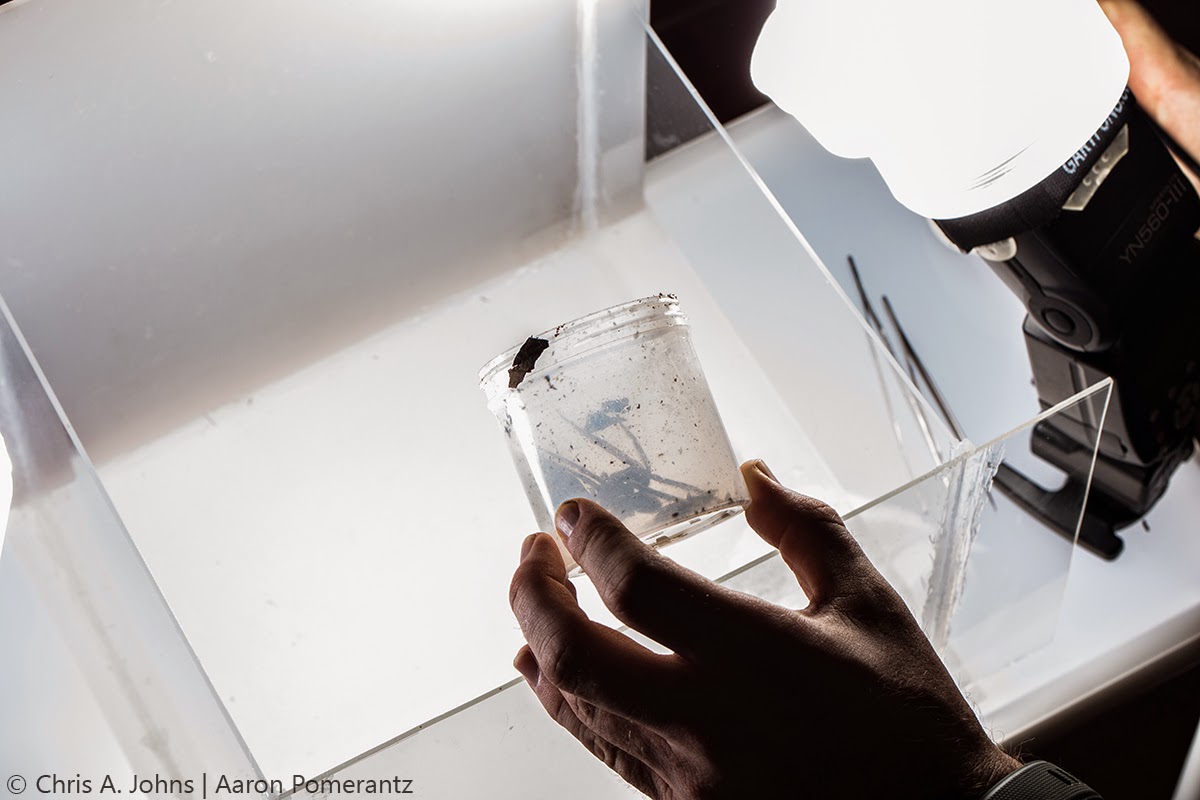About six months ago, graduate student Troy Alexander took photos of this odd structure. What was it? The images went viral and neither the internet nor experts could figure it out.
 |
| The inside 'tower' and outer 'fence' of this Amazon mystery. |
Written by Phil Torres.
So we returned to the Tambopata Research Center six months later with a team lead by myself, Phil Torres, to solve it. Alongside were entomologists Lary Reeves and Geena Hill, both from the University of Florida entomology department and with strong field experience, and photographer Jeff Cremer, to document the structure with macrophotography.
The previous theories on how these structures were formed were vast: slime mold, spiders, fungus, lacewings, and some even thought it was a hoax. With just the pictures to go on and no other similar structure found in the literature, we approached this very open minded, but did suspect a cribellate spider for the reasons well outlined here.
For this expedition, the goal was to find more of these structures, find what's making them, and try and figure out a function for the odd 'fence' with a 'tower' in the center.
We weren't even sure we'd find more on the small fish pond island in which the first two were seen, but over a stretch of trail about 200m long we ended up finding upwards of 45 of them as the week went on. After isolating some of the structures and long hours of observations in the field, day and night, we've come up with the following conclusions:
It was created by a spider. Three of the structures hatched out these spiderlings.
We're still attempting to identify the spider. There are several things that make this unusual. For one, it is not common for spiders to lay eggs and abandon them, they typically place silken egg sacs in their own web to protect. More oddly, it appears that there was only a single egg per structure (see image below). This, as far as we can tell, would be the only known occurrence of a spider laying a single egg per egg sac.
We saw a few adult spiders around that were prime suspects, but never saw any making it, so the construction and culprit remain a mystery.
There were a lot of mites around. The mites we found on and in the structures threw us off the trail for a bit as were unsure of the potential for the few groups of silk-producing mites to create such a structure themselves. We were able to rule them out once the spiderlings hatched, however we noted several instances of mites being seemingly trapped inside or along the 'fence' of the structure, and other times crawling directly on the inner tower (below).
 |
| One 'tower' toppled, leaving an egg exposed. Mites like this were often seen in or on the structures. |
One hypothesis is that the structure might be designed to trap mites, serving as an easy first meal for a hatching spider. There is also the possibility of the spiders putting some sort of chemical attractant on the egg case to bait the mites, as chemical lures have been documented several times with spiders.
 |
| Mites (the round, shiny objects) appear to be trapped within this structure. |
 |
| The Tambopata Research Center |
The spider appears to be habitat specific. We only found them in a particular area of successional forest habitat with high abundance of Cecropia and bamboo. This seems to fit the habitat of another single structure which was photographed in Ecuador. This information will allow us to survey other similar habitats to search for more.
 |
| The island where the spider was found can be seen in the lower left corner. |
We're eager to hear from spider experts out there who can provide some guidance on ID and evolutionary origin of the structure. There is much work to be done observing these in their natural environment to truly get to the bottom of it, but until then we can at least sleep at night knowing we've solved one part: it's a spider.




























































































































